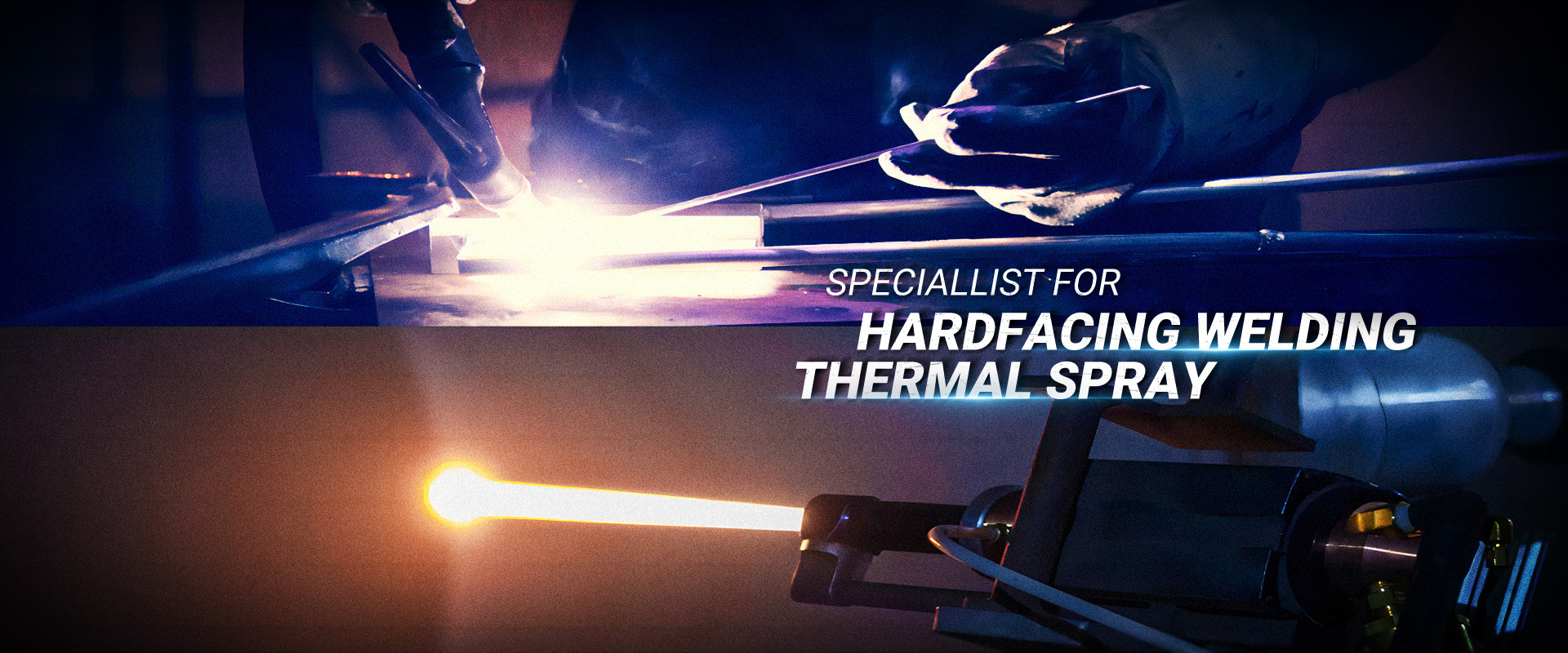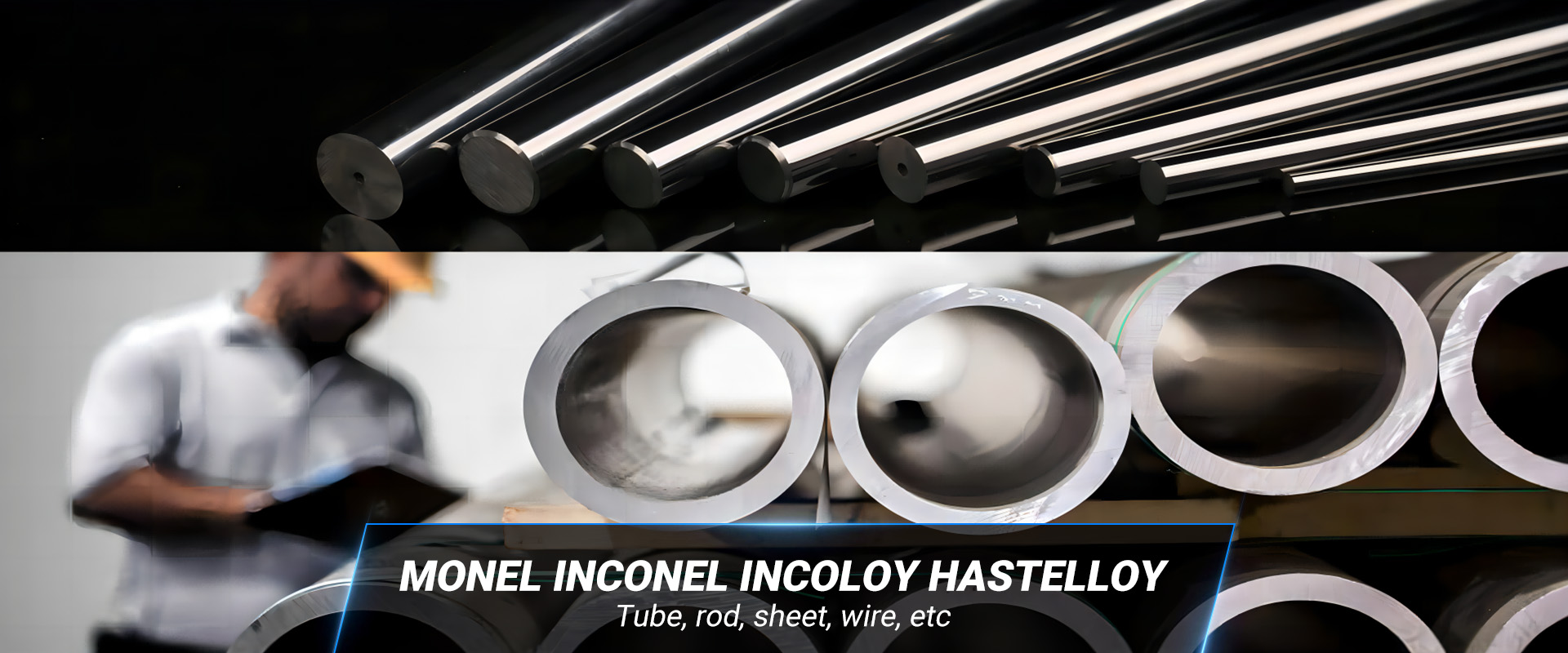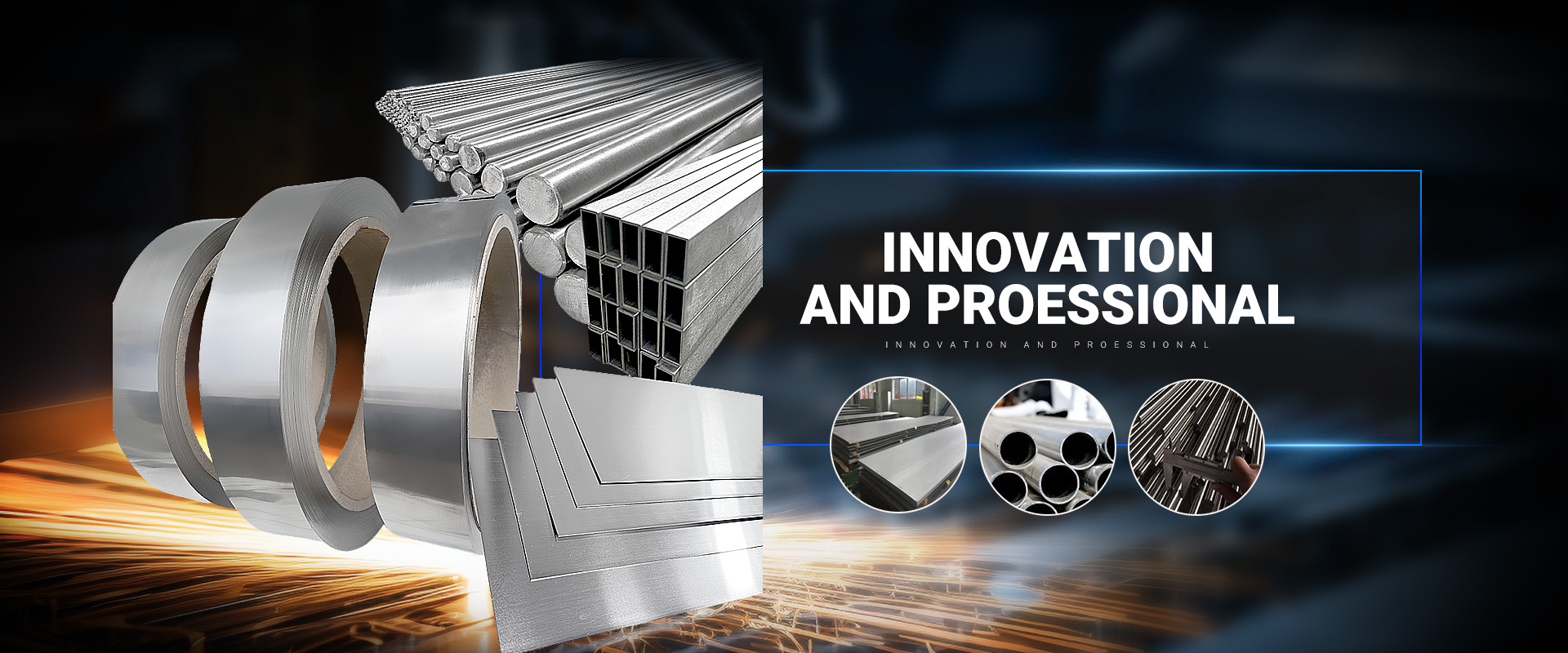WELCOME TO WL
Founded in 2009, WL allotech is a leading manufacturer of special alloys such as precision alloy, high temperature alloy, nickel-based special welding wire, corrosion resistant alloy, thermal spray and hardfacing welding materials. We supply materials in (core)Wire, Powder, Rod/Bar, Plate/Strip, Tube/Pipe, Fittings, Forgings, Mesh and other ended products at competitive prices to cater to the diverse and continuously changing needs of customers.

-
Commonly applied materials include cobalt-based alloys (such as Stellite),
nickel-based alloys, chromium carbide alloys. Hardfacing is sometimes followed by hot stamping to refinish the part or add color or instructional information to the part.
Hardfacing
welding material
- Coating materials usually come in powder or wire form through a feeder and
may include metals, alloys, ceramics, cermets, carbides, plastics, or composites.
The spray gun, also known as spray torch, is the main tool used to perform the operation. It can be operated manually or by robot arm.
Thermal
spray material
- The product form include strip, plate, bar, wire, ring, etc. The minimum thickness of strip is 0.005mm, the maximum width is 450mm, and the tolerance can reach ±0.5μm.
High temperature alloys Presion alloys
- Developed for aerospace, biomedical, automobile manufacturing, consumer electronics, industrial mold and other application fields.
Additive Manufacturing powder(3DPrinting)
- The Colmonoy family of nickel powder offer superior wear protection, retaining their hardness up to 600ºC (1112ºF) with significant resistance to oxidation. It is widely used in thermal spray (fuse) for wear-resistant protection and repair. The hardness of NiCrBSi can be HRC55~60. The hardness and anti-wear property of NiCrBSi will have a big improve when mixed with WC.
Colmonoy Nickel base powder
Products Application
We produce high quality materials widely apply to oil & gas industry, mining operations, timber, glass industry, Chemical industry, powder generation, and so on.
Latest News
Spraying Process

1.Surface pretreatment
In order to make the coating well combined with the base material, the surface of the base material must keep clean and rough. There are many methods to purify and roughen the surface. The selection of methods should be based on the design requirements of the coating and the material, shape, thickness, original surface condition, construction conditions and other factors of the substrate.
The purpose of purification treatment is to remove all dirt on the surface of the workpiece, such as oxide skin, oil stain, paint and other dirt. The key is to remove the grease on the surface of the workpiece and into it. Purification methods include solvent cleaning, steam cleaning, alkali cleaning and heating degreasing.
The purpose of roughening treatment is to increase the contact surface between the coating and the substrate, increase the mechanical biting force between the coating and the substrate, make the purified surface more activated, and improve the bonding strength between the coating and the substrate. At the same time, the surface coarsening of the substrate also changes the residual stress distribution in the coating, which is also beneficial to improve the bonding strength of the coating. Roughening treatment methods include sand blasting, mechanical processing, electric roughening, etc. Among them, sandblasting is the most commonly used roughening treatment method. The commonly used sandblasting media include alumina, silicon carbide and chilled cast iron. The compressed air used for sand blasting must be water-free and oil-free, otherwise it will seriously affect the quality of the coating. For some coating materials that do not bond well with the base material, a transition layer shall be sprayed with a material that is well bonded with the base material, which is called the bonding bottom layer. The materials commonly used as the bonding bottom layer include Mo, NiAl, NiCr and aluminum bronze. The thickness of the bonding bottom layer is generally 0.08-0.18mm.
2.Preheat
The purpose of preheating is to eliminate moisture and moisture on the surface of the workpiece, improve the interface temperature when the sprayed particles contact the workpiece, improve the bonding strength between the coating and the substrate, and reduce the coating cracking caused by the stress caused by the thermal expansion difference between the substrate and the coating material. The preheating temperature depends on the size, shape and material of the workpiece, as well as the thermal expansion coefficient of the substrate and coating material. Generally, the preheating temperature is controlled between 60-120 ℃.
3.Spraying
What kind of spraying method is adopted mainly depends on the selected spraying material, the working condition of the workpiece and the requirements for the coating quality. If it is ceramic coating, plasma spraying is the best choice. If it is carbide metal ceramic coating, high-speed flame spraying is the best choice. If it is spraying plastic, flame spraying can only be used. If large-area anti-corrosion engineering is to be sprayed outdoors, it is not flexible and efficient arc spraying or wire flame spraying. In short, the choice of spraying methods is generally diverse, but there is always one method that is the best for a certain application. The pretreated workpiece shall be sprayed in the shortest possible time. The spraying parameters shall be determined according to the coating material, spray gun performance and the specific conditions of the workpiece. The optimized spraying conditions can improve the spraying efficiency and obtain high-quality coatings with high density and high bonding strength.
4.Post coating treatment
Sometimes the coating obtained by spraying cannot be used directly, and a series of post-treatment must be carried out. For anti-corrosion coating, in order to prevent the corrosion medium from reaching the substrate through the pores of the coating and causing the corrosion of the substrate, the coating must be sealed. There are many materials used as sealing agent, including organic materials such as paraffin, epoxy resin, silicone resin and inorganic materials such as oxides. How to choose a suitable sealing agent should be considered according to the working medium, environment, temperature, cost and other factors of the workpiece. For the workpiece bearing high stress load or impact wear, in order to improve the bonding strength of the coating, the sprayed layer should be remelted (such as flame remelting, induction remelting, laser remelting, hot isostatic pressing, etc.), so that the porous coating that is only mechanically bonded to the substrate becomes a dense coating that is metallurgically bonded to the substrate. If there are dimensional accuracy requirements, the coating shall be machined. Because the sprayed coating has different characteristics from general metal and ceramic materials, such as microporous coating, which is not conducive to heat dissipation, low strength of the coating itself, which can not bear large cutting force, many hard particles in the coating, and rapid wear of tools, the sprayed coating is difficult to machine, which is different from general materials, Therefore, reasonable processing methods and corresponding process parameters must be selected to ensure the smooth machining of spraying layer and the required dimensional accuracy.
Characteristics of thermal spraying technology

From the analysis of the principle and process of thermal spraying technology, the thermal spraying technology has the following characteristics.
1.Due to the wide temperature range of the heat source, the coating materials that can be sprayed include almost all solid engineering materials, such as metals, alloys, ceramics, cermets, plastics and their composites, which can endow the substrate with the surface of various functions (such as wear resistance, corrosion resistance, high temperature resistance, oxidation resistance, insulation, heat insulation, biocompatibility, infrared absorption, etc.).
2.During the spraying process, the heating degree of the substrate surface is small and controllable, so it can be sprayed on various materials (such as metal, ceramic, glass, cloth, paper, plastic, etc.), and has little impact on the microstructure and properties of the substrate, and the workpiece deformation is small.
3.The equipment is simple and easy to operate. It can spray large-scale components in a large area or at designated parts.It can be sprayed indoors in the factory or constructed outdoors on site.
4.Spraying operation has fewer procedures, shorter construction time, high efficiency and economy.
Principle of thermal spraying

1.Formation of thermal spray coating
During thermal spraying, the particles of the coating material are heated to a molten state or a highly plastic state by a heat source. Under the thrust of the external gas or the flame itself, they are atomized and sprayed to the surface of the substrate at a high speed, and the particles of the coating material collide violently with the substrate. The deformation and flattening are deposited on the surface of the substrate, and at the same time, the particles are rapidly cooled and solidified, and the particles are deposited in layers to form a coating.
2 Structural characteristics of thermal spray coating
The formation process of thermal spray coating determines the structural characteristics of the coating. The spray coating is a layered structure in which countless deformed particles are interlaced and stacked together in waves. There are inevitably some pores and pores between the particles in the coating. voids, accompanied by oxide inclusions.
3.The bonding mechanism of thermal spray coating
The bonding of the coating includes the bonding of the coating to the substrate and the bonding within the coating. The bonding force between the coating and the surface of the substrate is called the bonding force, and the bonding force inside the coating is called the cohesive force. The binding mechanism between the particles and the substrate in the coating and the binding mechanism between the particles are still inconclusive, and it is generally believed that there are the following ways.
(1) Mechanical combination
The particles that collide into a flat shape and are undulating with the surface of the substrate and the uneven surface are fitted with each other, and are combined by the mechanical interlocking of the particles (anchor effect). Generally speaking, the combination of the coating and the substrate is mechanically combined. main.
(2) Metallurgy-chemical combination
This is a type of bonding when metallurgical reactions such as diffusion and alloying occur between the coating and the substrate surface. When remelting or spray welding is carried out after spraying, the bonding between the spray welding layer and the substrate is mainly metallurgical bonding.
(3) Physical combination
The bond between the particle and the surface of the matrix formed by van der Waals forces or subvalent bonds.
4.Residual stress of coating
When the molten particles collide with the surface of the substrate, they are chilled and solidified while being deformed, resulting in shrinkage stress. The outer layer of the coating is under tensile stress, and the substrate sometimes includes the inner layer of the coating, which produces compressive stress. This residual stress in the coating is caused by thermal spray conditions and differences in the physical properties of the spray material and the base material. It affects the quality of the coating, limits the thickness of the coating, and measures should be taken in the process to eliminate and reduce the residual stress of the coating.
Properties of Thermal Spray Coatings

1.Chemical composition
Because the coating material will interact with the surrounding medium at high temperature during the melting and spraying process to form oxides. Nitride, and decomposes at high temperature, so the composition of the coating is different from the composition of the coating material, and affects the performance of the coating to a certain extent. For example, the oxidation of MCrAIY will affect its corrosion resistance, while the wear resistance of WC-Co will decrease after oxidation and high temperature decomposition. This phenomenon can be avoided and mitigated by the choice of spraying method. For example, the use of low-pressure plasma spraying can greatly reduce the oxidation of coating materials, while high-speed flame spraying can prevent the pyrolysis of carbides.
2.Porosity
Pores inevitably exist in thermal spray coatings, and the size of porosity is related to the temperature and velocity of particles, as well as spraying parameters such as spraying distance and spraying angle. Generally speaking, the porosity of flame sprayed and arc sprayed coatings with low temperature and speed is relatively high, generally reaching a few percent, or even up to ten percent. The high-temperature plasma sprayed coating and high-speed supersonic flame sprayed coating have lower porosity. The minimum can be less than 0.5%.
3.Hardness
Due to the chilling and high-speed impact during the formation of the thermal spray coating, the grain refinement of the coating and the distortion of the crystal lattice make the coating strengthened, so the hardness of the thermal spray coating is higher than that of the general material. It will also vary depending on the spraying method.
4.Bonding strength
The bonding of the thermal spray coating to the substrate mainly depends on the mechanical engagement with the rough surface of the substrate (scratch effect). The cleanliness of the substrate surface, the particle temperature of the coating material and the speed at which the particles hit the substrate, as well as the residual stress in the coating will affect the bonding strength of the coating and the substrate, so the bonding strength of the coating is also related to the spraying applied. method related.
5.Thermal fatigue properties
For some workpieces used in the state of cooling and heating cycles, the thermal fatigue resistance (or thermal shock) performance of the coating is very important. If the thermal shock resistance of the coating is not good, the workpiece will be difficult to use It will crack or even peel off very quickly. The thermal shock resistance of the coating mainly depends on the difference between the thermal expansion coefficient of the coating material and the base material and the strength of the bonding between the coating and the base material.
MORE





.jpg?x-oss-process=image/resize)
_副本.jpg?x-oss-process=image/resize)
_副本.png?x-oss-process=image/resize)



